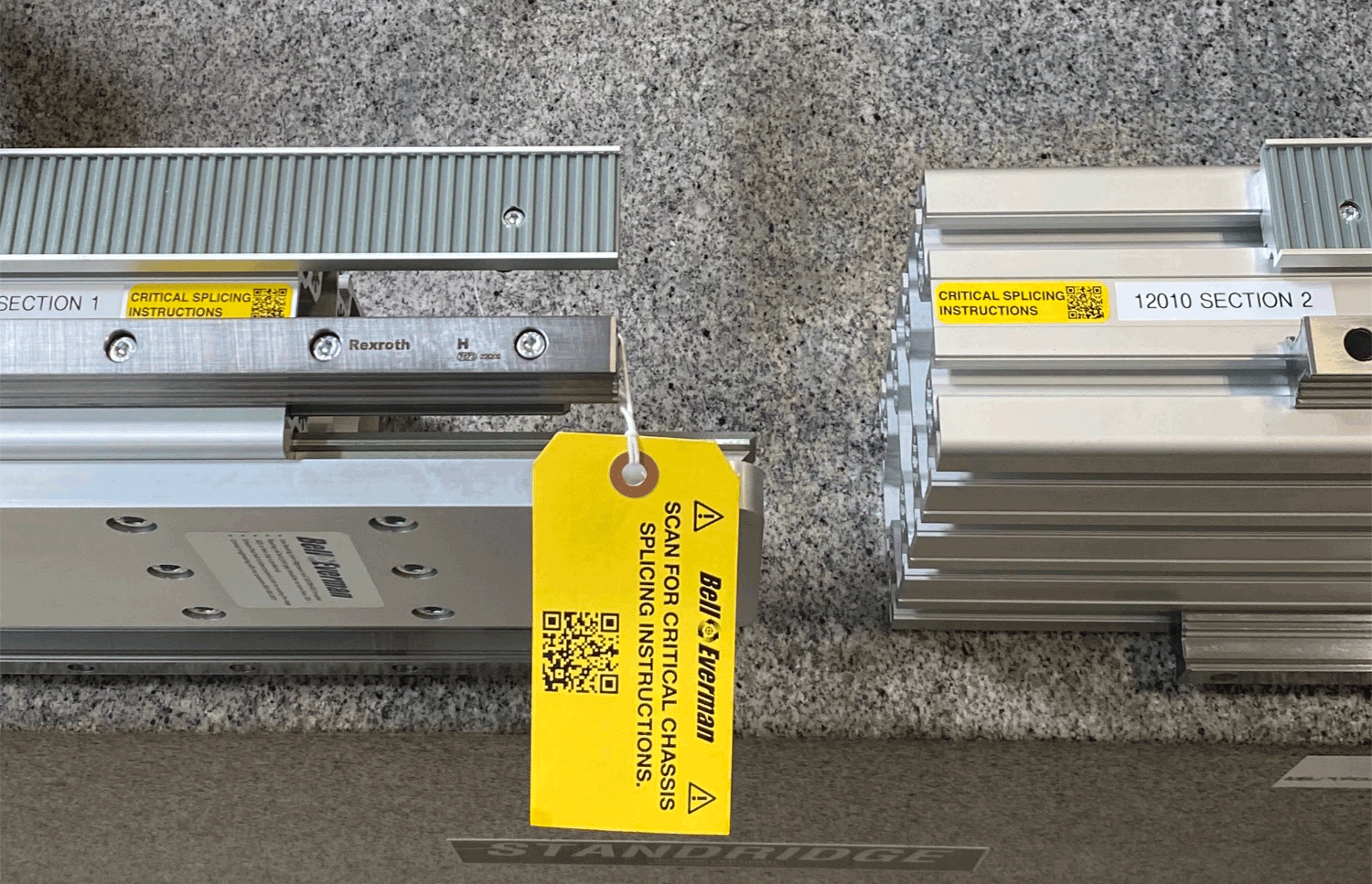ServoBelt™ Linear Actuators Now Feature Molded Belt Tray, Improving Assembly and Serviceability
We’re excited to announce that our latest generation of ServoBelt™ Linear actuators features a design enhancement that simplifies the assembly and installation of our long-travel motion systems — including our gantry and linear robots. The new design also strengthens ServoBelt’s ability to non-destructively withstand high-force events, such as carriage crashes.
The design enhancement involves ServoBelt’s lower static toothed belt. In earlier designs, this belt adhered to its aluminum carrier using 3M’s VHB adhesive tape. While strong, the VHB did complicate the assembly and installation process, requiring integrators to accurately apply the adhesive tape onsite at the actuator’s end-use location. This process also made it difficult to splice sections of ServoBelt together — which is essential when building systems with long travel axes — requiring higher attention to detail and cleanliness.

The New and Improved Molded Belt Tray
Improving on the earlier design, ServoBelt now has a “rack” of teeth molded directly into the actuator’s aluminum carrier. The rack offers precision tooth forms identical to the static belt it replaces and is molded from an equally rugged polyurethane — with a 50 Shore D hardness and minimum 4,500 psi tensile strength.
To ensure lasting adhesion between the molded urethane and aluminum belt tray, we paid a lot of attention to preparing the surface of the belt tray — including an etching process and application of a primer. As a result, the new molded-in belt offers significantly more resistance to tear-out forces than the earlier design.
The new design now allows integrators to splice ServoBelt sections just as easily as they would with a traditional rack-and-pinion, using a simple tool similar to a tooth rack. Check out our splicing instructions to see just how easy it is to assemble multiple ServoBelt sections into long travel motion systems and robots.
